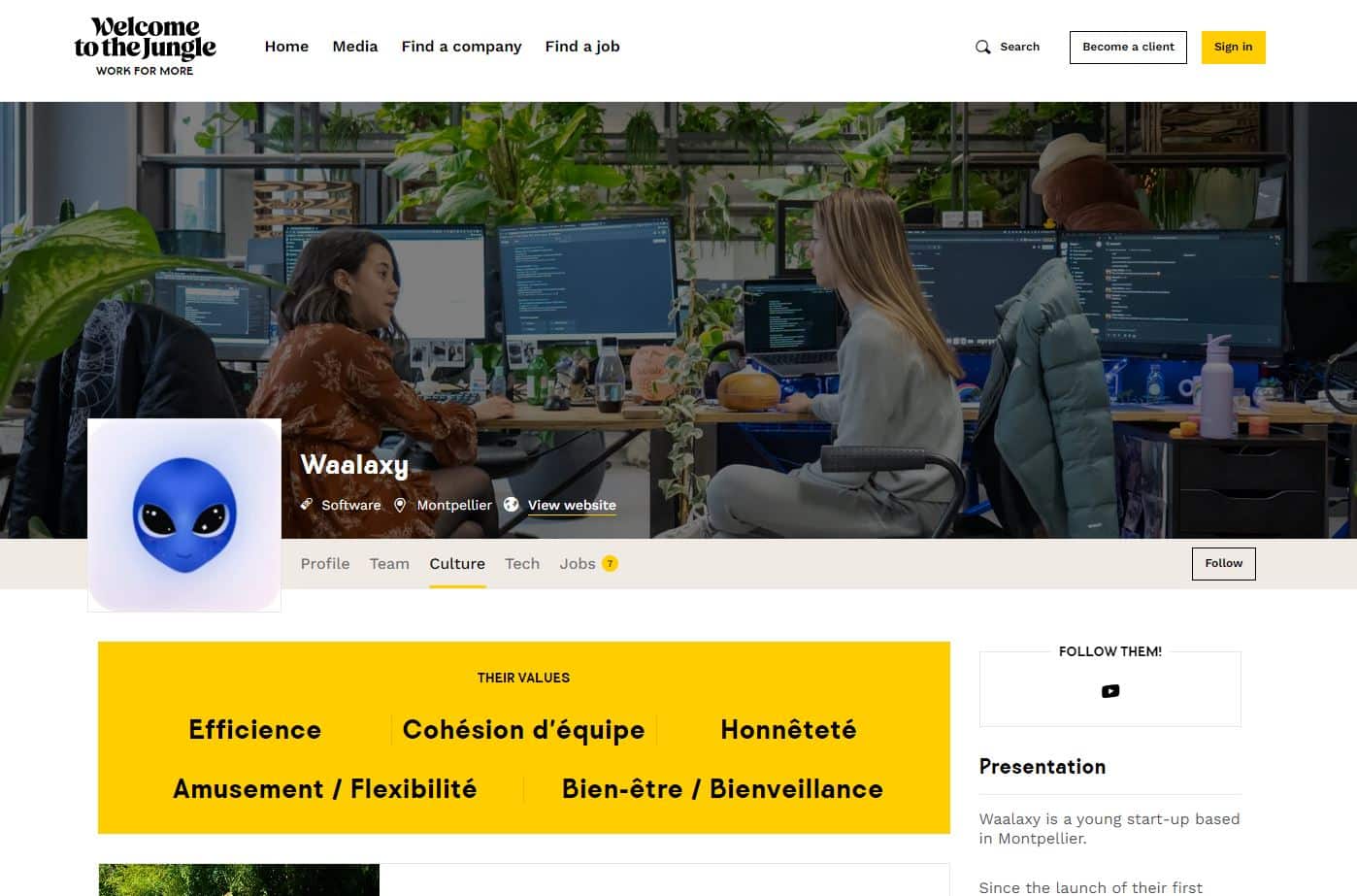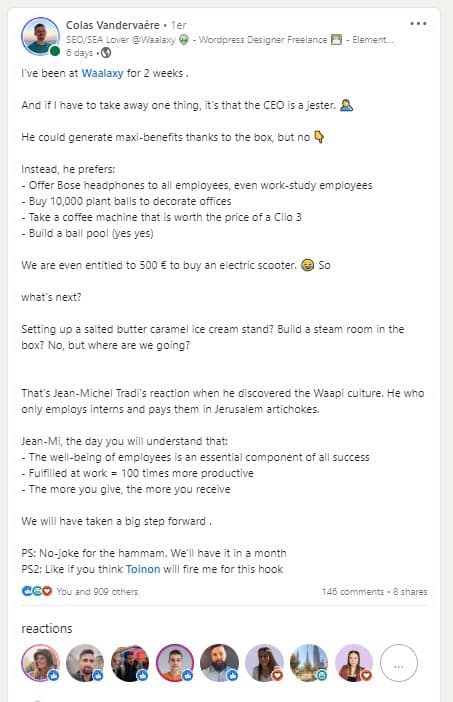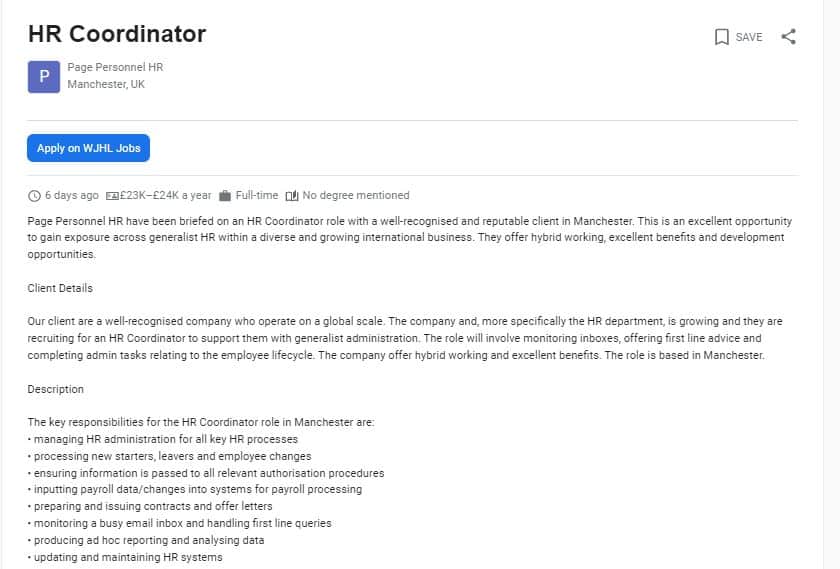- How To Recruit Candidates Properly?
- The 8 Essential Steps to learn how to recruit successfully
- 1. Work on your employer brand
- 2. Understand and communicate all the issues of the position
- 3. Be active in your search for candidates
- 4. Sort candidates with proven methods
- 5. Conduct pre-interview tests
- 6. Succeed in your job interviews
- 7. Prepare a pre-boarding day
- 8. Set goals during the probationary period
- Conclusion & FAQ: How to recruit the right person?
Are you trying to figure out how to recruit employees who are the perfect fit? 🤔 How do you find the right person for the job from the pile of applications and potential candidates? And how do you best lead them through the recruiting process so that they are attracted to the company culture?
We understand you… So read this article!
How To Recruit Candidates Properly?
As you can see, the answer is in several steps. Of course, it will have to be adapted to your recruiting process.
If you are a recruitment agency, you do not experience all the steps of recruitment (such as onboarding and the trial period), but you will be interested in the first steps to find, contact and sort the candidates. In addition, we tell you about effective tools and easy ways to get there.
If you go through a recruitment agency, you may not source the candidate, but you will try to make a success of your employer brand and make a hiring proposal to this famous ideal candidate.
And finally, if you are in charge of recruiting in your company, you will go through all the 8 steps of recruiting that we talk about in the article.
So, let’s get started? 😁
The 8 Essential Steps to learn how to recruit successfully
There are 8 steps in the recruiting phase, from creating the employer brand to the probationary period phase. Each of these steps is essential.
1. Work on your employer brand
To simply define what an employer brand is: It is the image that the company conveys, not to consumers, but to candidates who come to apply. It allows you to highlight both professional and human advantages: strong values, fun company culture, stress reduction, luncheon vouchers, varied missions… Everything that can make the employee feel good in his work environment.
Define the salary benefits
The study is from 2019, so you can imagine that employer branding is even more valued now than it was then.
So the first step is to define those benefits. What does the company bring to its employees to differentiate itself? What else could you bring to the table as an employee well-being manager?
Here’s a list of ideas to implement for your employer brand 🧡
- Company-sponsored afterworks,
- A room dedicated to rest and adapted to employees’ needs,
- Restaurant tickets or cards,
- Flexible working hours and telecommuting,
- Arrival gifts and purchase of high-performance equipment on arrival,
- Gift cards for holiday periods.
Communicate about your employer’s brand
So, we come to the second step, communicating about your employer brand. It’s great to have tons of benefits, but candidates need to be able to discover it before the recruitment period. Why? Because you’ll attract the best candidates. 😎
The best way to learn how to recruit is when the most qualified profiles come directly to you, and in order for them to come to you, they need to hear about your company and the vibe internally. To do this:
- Communicate as much as possible on social networks: LinkedIn, Instagram, and potentially TikTok.
- Add a “career” and “life at work” page to your website.
- Do interviews with well-known employment-promoting brands like Welcome To The Jungle.
- Create a company page on LinkedIn.
- Get your employees talking about workplace wellness: Posts on social networks, reviews on various sites, and word of mouth.
- Participate in webinars on workplace wellness and share your company values.
Here is an example of what you can set up in terms of HR media = A page on a well-known site with different interviews and the development of your values, you can also place several ads on it.

Add posts to promote the brand. The best advertisement for you is when your employees talk about the well-being in their company. It’s always better than a boss bragging about his own benevolence. 😂
If you’re a recruiting firm, or an independent recruiter, you can encourage the company to have a publishing policy related to employer branding it will make your job easier.
Here’s a perfect example of what you want to see on your potential candidates’ news feeds. 👇

2. Understand and communicate all the issues of the position
First: understand the job offer.
You absolutely must understand all the issues and benefits of the position, and convey them as best you can. Also, and most importantly: avoid taboos about salary. More and more, candidates are expressing a desire for transparency during their job interviews.
They want to know exactly what the position entails, the difficulties, the benefits, the teams, the managerial profile… Everything that allows them to protect themselves.
To make sure you don’t miss anything, fill out a job description, focusing on the profile you are looking for and all the assignments. Get information on the work environment and conditions.
If you are an agency or an independent recruiter, make sure you have filled out the job description with your contact person at the company. If not, go and get all the information you need, explaining that this is the only way to find the right profiles.
You can copy/paste this job sheet to an Excel or Word to reuse. 👇
The job description
| POSITION | |
| Job title | |
| Nature of the position | |
| Profile sought | |
| Salary | |
| SERVICE | |
| Main mission | |
| Composition of the department | |
| Positioning (Head, Manager..) | |
| MISSIONS | |
| Main mission, reason for being or purpose of the position | |
| Missions and activities of the position | |
| Constraints difficulties of the position | |
| Advantages of the position | |
| REQUIRED SKILLS | |
| Profile of the position | The “knowledge” : The “know-how” : The cultural “fit” : The “savoir-être” : |
Secondly, you need to successfully convey this job offer and make it appealing to the right candidates. I still see a lot of job offers that are for the benefit of the company and not the future recruit.
Avoid as much as possible the following terms that will scare away the best profiles.❌
If you are looking for perfect profiles, who can work in bad conditions and have a lot of work experience, you will never hire. Make sure your requirements meet the reality of the market.
Then post your ad on job boards, your website, and social networks.
What not to do in terms of a job ad. ❌

In this ad, you don’t have “practical” information: salary, hours, days worked. Nor do you have any human information: teams, values, internal mobility… In short, no one can project themselves into a typical day at work.
At Waalaxy, we have developed job offers that work! We have countless candidates who respond to our offers with great motivation.
We’re sharing a typical job offer, you can copy/paste it 👇
| Who are we? | Company, number of employees, business sector, turnover, website… |
| What is our ambition? | The major projects in progress, the evolutions, the development. |
| What do we offer? | The work environment, the values, the setting, the places. |
| What is the position? | Clear job title in relation to the sector of activity, hours, working conditions. |
| What are your missions and your typical day? | Detailed description of the position and a typical day’s work. |
| What profile are we looking for? | Both in terms of skills and interpersonal skills. |
| What are your benefits? | Salary, luncheon vouchers, benefits, bonuses, unlimited vacations. |
| What is the job interview procedure? | Explain to the candidate how to apply. Original resume? Cover letter? Give deadlines and explain the stages of recruitment. |
Of course, you can simply adapt it to the formal if your target is more serious. 🤓
3. Be active in your search for candidates
The study adds that there are fewer and fewer applications and more and more requirements on the candidate side (this ties in with the recruitment trend explained above).
The best candidates are often already employed. They will not be active in their job search. When we find a perfect profile and we manage to offer him an interview, we call it “poaching” an employee.
This practice is becoming more and more common, it has started to materialize in sectors that require specific skills such as IT profiles, and now is widespread in both B2b and even B2c, such as personal assistance and medical.
To be a headhunter, you need to arm yourself with the best tools:
- Monitor companies that hire the same types of profiles,
- Search for former students of schools corresponding to the profiles you are looking for,
- Conduct targeted surveys, by “type of position” on networks such as LinkedIn.
To be active and source candidates, the best way to do so is through THE professional social network for employment: LinkedIn.
But how? 🤓
How to recruit on LinkedIn?
Start your talent acquisition with a few simple steps :
- Do a good LinkedIn search (the method to segment your results), and identify profiles that fit your candidate category.
- Inject all of your candidates into your free LinkedIn Recruiting Software and add them into message campaigns that will help you recruit.
- Send them automated messages to approach hundreds of potential candidates in seconds.
Here’s a sample post to connect with new talent (reusable on Waalaxy). 👇
It’s as simple as that, 3 key steps: A method, a tool, and a message.
[maxbutton id=”64″ ]
4. Sort candidates with proven methods
Candidate sourcing is hard work! How do you sort profiles? Often, we find ourselves with hundreds of resumes to read and little time (and especially little motivation). So, to gain efficiency, we explain two techniques.
Before you start, identify the know-how and interpersonal skills of the position.
To sort resumes, you have two options: automatic or practical methods.
Automatic resume sorting
Yes, nowadays, everything is automated, even the sorting of resumes to recruiting a candidate.
Resume sorting software assigns scores to the candidate according to criteria predefined by the recruiter. You must therefore prepare a list of criteria corresponding to the profile sought (number of years of experience, tools mastered, languages spoken, etc.)
Here is an example of software that you can test to find talents that match the profile you are looking for.
The methodological CV sorting
First of all, you have to remove from the list all the resumes that do not match the open position.
Then there are 3 key steps to create a resume sorting table online or in Excel.
- Step 1: Define the skills and know-how required.
- Step 2: Define the expected soft skills related to the position.
- Step 3: Build the comparative table of selected candidates.
The candidate(s) with the most checkboxes can move on to the next step in the process.You can keep profiles that may be of interest in the future in your candidate pool.
| Required know-how : | Candidate 1 | Candidate 2 | Candidate 3 | Candidate 4 | Candidate 5 | Candidate 6 | Candidate 7 |
| skill 1 | X | X | |||||
| skill 2 | X | X | |||||
| skill 3 | |||||||
| skill 4 | X | X | |||||
| skill 5 | |||||||
| skill 6 | |||||||
| skill 7 | X | X | |||||
| skill 8 | X | ||||||
| soft skills 1 | X | X | |||||
| soft skills 2 | |||||||
| soft skills 3 | X |
5. Conduct pre-interview tests
Pre-interview tests for job interviews. 💡
This is a step that can be essential in your recruiting tactics to verify certain skills. It’s being done more and more, and it took off considerably during the 2021 health crisis. In some professions, they can be indispensable: IT, Design, architecture, consulting firms, or even project management…
You can for example ask your candidate to carry out missions related to the future position, here are some examples:
- “Community manager” Writing 3 publications.
- “Developer” Solving a code problem.
- “Salesperson” Sell a solution.
Generally, these tests are done online, via a platform, a shared Word document, or through a phone call. In addition to checking the candidate’s knowledge, you also analyze his or her motivation to fill the position.
In some cases, companies practice “E-recruitment”, meaning that all hiring processes are done digitally. This can work very well, depending of course on the type of position and the sector of activity.
Job interview tests
There are several types of tests, depending on the position targeted by the future employee, here are some examples:
- Written skills test (vocabulary, syntax..).
-
Digital skills test (software, ease with digital tools).
-
Situational tests (you present a given situation and ask the candidates to find a solution).
-
Creativity tests (you ask for a point of view or visual identity thanks to a brief).
- Personality tests (to identify the type of profile and the candidate’s skills).
💡 For each of these tests, make sure they are feasible and analyzable afterward.
To do this, make an analysis grid. 🤓 Otherwise, you risk mixing your impressions and emotions with the test results.
6. Succeed in your job interviews
During job interviews, you are introducing the candidate to the company’s world for the first time. This is the time to put stars in his eyes. 🤩
Even if you only validate the hiring of one of them, the candidate’s experience must absolutely be taken into account. They are the ones, who will then convey the image of your employer’s brand through word of mouth.
Here is the recruiter’s checklist for successful job interviews:
- 1) The candidate welcomes A cup of coffee, a tour of the premises, a quick hello to the teams, and a quiet place to talk.
- 2) Job presentation: Review the details of the job description to avoid any grey areas.
- 3) Prepare the relevant questions to ask according to the position.
- 4) Present the advantages of the position and the company.
- 5) Finalize by explaining to the candidate the next step in the recruitment process.
Questions to ask the candidate
Of course, the questions to ask the candidate will depend on the company’s activity and the position to be filled. But some questions can be pretty “universal”, here are some ideas to get you started. 👇
Again, adaptable to being on a first-name basis if needed!
7. Prepare a pre-boarding day
Successful onboarding is the last phase of recruitment. The icing on the cake. 🍒
It allows everyone to be aligned: the candidate understands the company’s values, the teams can have a first feeling with the new employee and the manager can then debrief with the teams. Once again, it’s a time to prove the strength of your employer’s brand.
Be careful, there are two terms:
- Onboarding = arrival in the company.
- Pre-onboarding = integration day as part of the recruitment process.

But then, some of you may never have heard of pre-onboarding?
What is pre-onboarding?
This day comes after all the previous stages of recruitment have been validated and consolidated or cast doubt on the possible agreement between the employee and the teams. The pre-onboarding day arrives as the final stage of recruitment. 🤩 Only the person or persons who have been chosen to join the company enter the pre-onboarding day.
How do you create a successful pre-onboarding day?
Here’s what you can do to welcome your candidates into the final stage of the hiring process. 👇
🌇 Morning:
- Welcoming the candidate with a coffee, then a visit of the premises and the different departments.
- A total immersion thanks to a briefing of the team managers: explanation of the strategies in progress, of the organization of the teams, and of the various trades within the company.
- Lunch with the team members.
🌆 Afternoon:
- Re-explanation of the company’s main objectives and two of the position.
- Explanation rather than “human resources and common life” on the accompaniment and reminder of the advantages to the hiring.
- Summary mail after the visit of the candidates to the premises with a hiring proposal.
8. Set goals during the probationary period
The trial period is essential and always part of the recruitment process. The new employee still has to prove himself or herself, on a human and professional level. So make sure, as a manager or leader, that you set quantifiable and measurable short-term objectives.
Prefer short missions that allow you to analyze specific points: teamwork, autonomy, learning the company’s practices, problem-solving. Each task will focus on a particular point. Keep in mind, however, that it will take some time to adapt to the job before the candidate is operational.
💡 Little HR Tip:
Always double the probationary period to allow maximum time for reflection, while clearly expressing to the candidate that this is a common practice at your company and does not mean a failure to meet their goals.
Provide constant feedback
Your feedbacks are essential for new employees. It is your analysis of the work done by the new employee. Each point must be illustrated and argued. As a manager, you also have the duty to train and teach.
To avoid offending the employee, you can use the feedback sandwich method. 🥪

It’s very simple,
“Bring a criticism by surrounding it with compliments.”
To make it short: this method is designed to not frustrate or demotivate your counterpart. If you get negative feedback, never forget to highlight the positive as well. The brain will more easily focus on what you say at the beginning and end of the sentence, it avoids a bitter taste after the interviews. Do you want an example of a situation setting? 👇
In this example we highlight:
- Involvement (first slice of the sandwich).
- Lack of depth (center of the sandwich).
- Progress (last slice of the sandwich).
You can therefore continue to give positive and negative feedback while analyzing the candidate’s progress!
Conclusion & FAQ: How to recruit the right person?
💡We also remind you that you can save time and speed up the process by integrating recruitment automation into your strategy.
How to show the company’s values?
The company’s values are a key point in the recruitment process. Moreover, generations X, Y, Z are more and more sensitive to the values of the company and the meaning of their work. With the health crisis and global warming, ecological and social values are the most important ones and give companies better publicity. So, to learn how to recruit those profiles, you need to understand their motivations.
There are several ways to promote your company’s values in order to learn how to recruit the best talents:
- Use social networks as a way to communicate.
- Have a dedicated company presentation page on the website or blog.
- Do webinars and interviews.
- Have detailed descriptions on job boards and job postings.
How to conduct a recruitment interview?
Go through the 5 steps:
- 1) Candidate welcome.
- 2) The job presentation clarifying any grey areas.
- 3) Prepare the relevant questions to ask according to the position.
- 4) Present the advantages of the position and the company.
- 5) Finalize by explaining to the candidate the next step in the recruitment process.
What are onboarding and offboarding?
Onboarding is translated as “embarking” and offboarding as “disembarking”. Onboarding refers to the integration of a new employee into the company’s workforce. As for offboarding, it is the last day of the employee. Offboarding can be due to several reasons: Retirement, end of the contract, resignation…
It is important to take care of the arrival of the employee, as well as his departure so that he keeps a good image of his experience in the company and can recommend it to his colleagues and acquaintances; it’s called an employee referral.
How to recruit?
There are several ways to recruit personnel:
- Post ads on LinkedIn and job boards.
- Do the “hunt”, i.e. contact The candidate reception: The little coffee, the tour of the premises, a little hello to the teams, and a quiet place to chat.
- Launch recruitment campaigns on LinkedIn
- Job presentation: Review the details of the job description to avoid grey areas.
- Prepare relevant questions to ask based on the position.
- Represent the benefits of the position and the company.
- Launch email recruitment campaigns
- Finalize by explaining to the candidate the next step in the recruitment process.
- Contact interesting profiles on LinkedIn, by email and by phone.
- Participate in job dating.
How to become a recruiter?
- To become a recruiter, you can follow training courses in business schools (from 2 to 5 years),
- You can take short courses to learn how to recruit and other basics of the job and apply for jobs.
- You can train “on the job” by starting with internships or temporary work for example.
How to recruit quickly ?
Sometimes, a person has to be recruited very quickly: resignation, the opening of a new department, strong growth…
In some urgent cases, like these, inbound recruiting and hunting on LinkedIn are the best way to have access to a number of interesting and relevant profiles.
To go even faster, you can prospect profiles in a fast and efficient way by using Waalaxy’s free option: contact up to 100 high-potential profiles per week automatically and find the rare pearl.
[maxbutton id=”73″ ]
Remember, the goal is not only to recruit quickly but more importantly, to learn how to recruit well, with the 8 key steps. 😜









